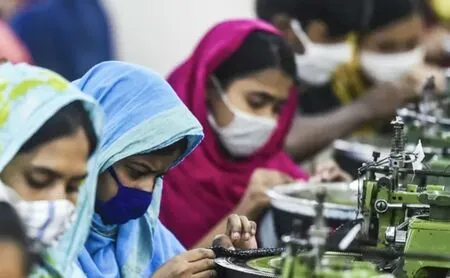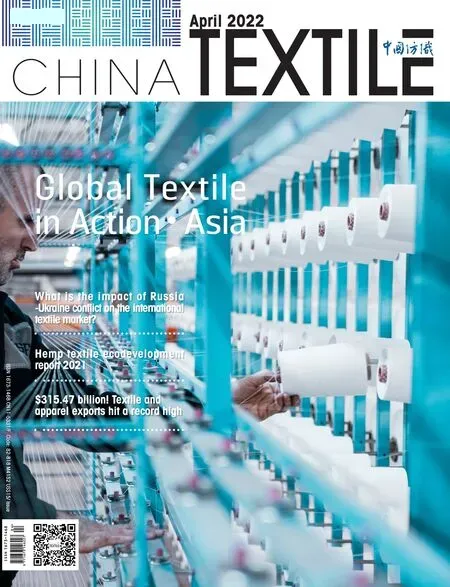Bangladesh:Reasons to promote the growth of textile industry
The textile industry in the Bangladesh is a main sector of country economy.Bangladeshi Textiles industry has a famous reputation in the world’s competitive garments market.The textile industry of Bangladesh is specialized in textile goods,knitwear,and woven apparels.These products are top in grabbing the export income for the country.
In the past decade,Bangladesh has surpassed India in terms of exports due to the 20% increase in product prices caused by Indian labor costs.Due to the civil war in Sri Lanka,Bangladesh joined the alliance in 1980s.Lower production costs and free trade agreements with western buyers are beneficial to Bangladesh,which ranks third among global exporters.
Exports position
Bangladesh is the third largest exporter of textiles and clothing in the world.In the past five years,its textile and clothing exports have increased at a compound annual growth rate of 9%and its imports at a compound annual growth rate of 7%.Due to the outstanding performance of ready-to-wear products,Bangladesh's export revenue in July-February of this fiscal year (2021-22)increased by 30.46% from USD 25.86 billion in the same period of last fiscal year to USD 33.84 billion.
Over the last five years,its T&A exports have grown at a positive CAGR of 9%,reaching $34.4 billion in 2016,while imports have grown at a CAGR of 7%,reaching $10.3 billion back in 2016.In 2016,Bangladesh’s apparel and textile trade balance were $24.1 billion positive.
Bangladesh imports the most cotton textiles,accounting for 55% of the total imports of clothing and textiles.Man-made textiles,others and clothing ranked second,third and fourth,accounting for 35.0%,6.8%and 3.2% respectively.Bangladesh imports 94% of its textiles and clothing from the top ten suppliers,most of which come from China,accounting for 58% of its total market.India and Pakistan followed closely,accounting for 19% and 6% of the market respectively.Cotton accounts for most of India's textile and garment exports to Bangladesh,accounting for 77% of all exports.Artificial textiles and clothing ranked second and third,accounting for 17% and 4% of the market share respectively.
Performance in outsourcing


As the largest clothing exporter in the world,Bangladesh garment exports grew at a compound annual growth rate of 13%,from USD 4.8 billion in 2000 to USD 33.8 billion in 2021,and may expand on a larger scale in the future.The rapid growth of Bangladesh's garment exports will lead to an increase in the demand for textile intermediate products such as fabrics and yarns.To make up the gap between supply and demand,Bangladesh now imports yarns and fabrics from China,India and other countries.Bangladesh has been an important export market for man-made textiles and cotton garments for a long time.
It is expected that there will be a lot of new investment in purchasing textiles in Bangladesh in the next few years.According to reports,Australia expressed interest in developing a manufacturing center in Bangladesh,and buying back the goods produced there or exporting them to Europe and other countries.Australian enterprises will provide inputs such as wool,cotton,wood,meat,leather and grain to Bangladeshi industrialists,who will produce goods and re-export them to Australia or Europe.
By paying more attention to distribution channels,Bangladesh is predicted to become a self-sufficient textile and apparel center within the next ten years by emphasizing more on the distribution channels.Therefore,although Bangladesh is the main outsourcing market for clothing and textiles,it will be crucial for Indian companies whose main export market is Bangladesh to find other markets in the next few years.
Reasons behind the growth of textile
Industrious labor force in Bangladesh is the main reason for the growth of textile industry.In order to meet the deadline,people who participated in the area often work overtime.As a result,the per capita income and people's living conditions in Bangladesh have improved in recent years.In addition,there are three basic reasons to promote the growth of textile industry in Bangladesh:abundant resources and beneficial government policies;Cheap natural gas and energy;arge population,it has obvious industrial advantages in creating laborintensive products.These prospects benefit from the support of the government,and the government's liberal policy also encourages foreign investment.
- China Textile的其它文章
- Global Textile in Action ? Asia
- India:Measures to boost exports,production,and job opportunities
- Pakistan:The 2022 investment will up to USD 3.5 billion
- Dear readers:
- Japan:Occupy an important position in the high-end textiles field
- Vietnam:Most textile orders have managed to the third quarter

